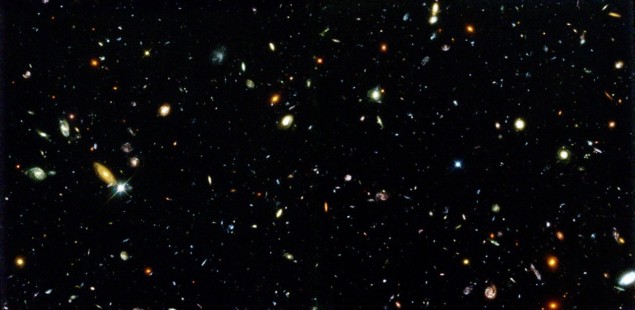
It has been 24 years since the first Hubble Deep Field image was released, providing an astonishing view of thousands of galaxies that are lurking in just a tiny part of the sky. These include some of the youngest and most distant galaxies we have ever seen. But what is most amazing is that the image contains a jumble of galaxy shapes and sizes that hint at just how huge and diverse the universe is and how many stars it contains.
The folks at the Perimeter Institute for Theoretical Physics have put together “14 mind-bogglingly awesome facts about the Hubble Deep Field images” for your enjoyment.
2020 marks the 30th anniversary of the launch of the Hubble Space Telescope. In 2010, Physics World celebrated the 20th birthday of the observatory with the article “Hubble’s greatest hits” by the astrophysicist Mark Voit. He reminds us of the disastrous start of the mission, when a major fault in the telescope’s optics was discovered. Voit also explains how this was corrected, allowing Hubble to acquire some of the most amazing images of the universe that we have.
Our favourite quasiparticle here at Physics World is the skyrmion. It is named after the British physicist Tony Skyrme who postulated the eponymous particle in a series of papers published in the late 1950s and early 1960s.

Talking skyrmions in Columbus, Ohio
Today, the skyrmion is familiar to condensed-matter physicists as a magnetic excitation that is topologically stable. But as Ian Aitchison explains in “Tony Skyrme and the origins of skyrmions”, Skyrme’s motivations were much more fundamental.
In his paper (based on a talk Aitchison gave in December), he explains that Skyrme was trying to develop a description of the nucleon (proton or neutron) in terms of meson fields. His goal was to develop a unified description of physics that did not require both boson and fermion fields.
“But Skyrme didn’t really like fermions, a point I’ll return to in a moment,” Aitchison writes.
Aitchison also explains how Lord Kelvin influenced Skyrme’s thinking and points to a connection between Skyrme’s great grandfather and Kelvin’s famous tidal predictor machine.



